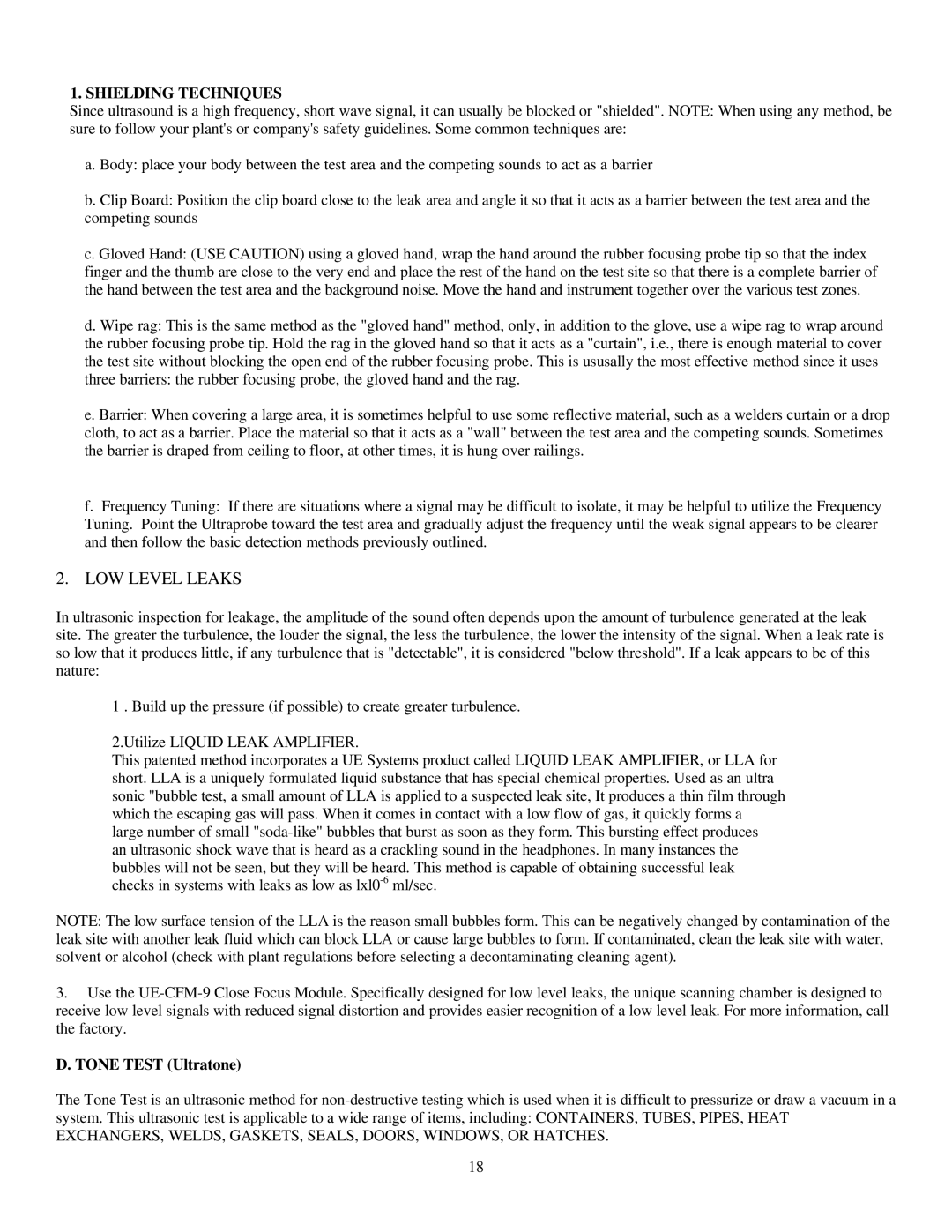1. SHIELDING TECHNIQUES
Since ultrasound is a high frequency, short wave signal, it can usually be blocked or "shielded". NOTE: When using any method, be sure to follow your plant's or company's safety guidelines. Some common techniques are:
a. Body: place your body between the test area and the competing sounds to act as a barrier
b. Clip Board: Position the clip board close to the leak area and angle it so that it acts as a barrier between the test area and the competing sounds
c. Gloved Hand: (USE CAUTION) using a gloved hand, wrap the hand around the rubber focusing probe tip so that the index finger and the thumb are close to the very end and place the rest of the hand on the test site so that there is a complete barrier of the hand between the test area and the background noise. Move the hand and instrument together over the various test zones.
d. Wipe rag: This is the same method as the "gloved hand" method, only, in addition to the glove, use a wipe rag to wrap around the rubber focusing probe tip. Hold the rag in the gloved hand so that it acts as a "curtain", i.e., there is enough material to cover the test site without blocking the open end of the rubber focusing probe. This is ususally the most effective method since it uses three barriers: the rubber focusing probe, the gloved hand and the rag.
e. Barrier: When covering a large area, it is sometimes helpful to use some reflective material, such as a welders curtain or a drop cloth, to act as a barrier. Place the material so that it acts as a "wall" between the test area and the competing sounds. Sometimes the barrier is draped from ceiling to floor, at other times, it is hung over railings.
f. Frequency Tuning: If there are situations where a signal may be difficult to isolate, it may be helpful to utilize the Frequency Tuning. Point the Ultraprobe toward the test area and gradually adjust the frequency until the weak signal appears to be clearer and then follow the basic detection methods previously outlined.
2.LOW LEVEL LEAKS
In ultrasonic inspection for leakage, the amplitude of the sound often depends upon the amount of turbulence generated at the leak site. The greater the turbulence, the louder the signal, the less the turbulence, the lower the intensity of the signal. When a leak rate is so low that it produces little, if any turbulence that is "detectable", it is considered "below threshold". If a leak appears to be of this nature:
1 . Build up the pressure (if possible) to create greater turbulence.
2.Utilize LIQUID LEAK AMPLIFIER.
This patented method incorporates a UE Systems product called LIQUID LEAK AMPLIFIER, or LLA for short. LLA is a uniquely formulated liquid substance that has special chemical properties. Used as an ultra sonic "bubble test, a small amount of LLA is applied to a suspected leak site, It produces a thin film through which the escaping gas will pass. When it comes in contact with a low flow of gas, it quickly forms a large number of small
an ultrasonic shock wave that is heard as a crackling sound in the headphones. In many instances the bubbles will not be seen, but they will be heard. This method is capable of obtaining successful leak checks in systems with leaks as low as
NOTE: The low surface tension of the LLA is the reason small bubbles form. This can be negatively changed by contamination of the leak site with another leak fluid which can block LLA or cause large bubbles to form. If contaminated, clean the leak site with water, solvent or alcohol (check with plant regulations before selecting a decontaminating cleaning agent).
3.Use the
D. TONE TEST (Ultratone)
The Tone Test is an ultrasonic method for
18
